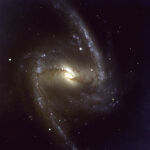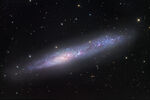| Constellations (12) | |
|---|---|
| Apus, Fornax, Grus, Indus, Mensa, Microscopium, Octans, Pavo, Phoenix, Sculptor, Telescopium, Tucana | |
| Nomenclature | |
| Abbreviation | Sol |
| Genitive | Solaris |
| Pronunciation | Name: /'sōl•ār•ē•yüm/ Genitive: /'sōl•ār•is/ |
| Symbolism | the sundial |
| Geometry | |
| Midpoint right ascension | 22h 00.00m |
| Midpoint declination | −56° 52.69' |
| Northernmost border | −23° 45.38' |
| Southernmost border | −90° 00.00' |
| Westernmost border | 00h 00.00m |
| Easternmost border | 24h 00.00m |
| Quadrant | SQ4 |
| Crossed by | South pole Spring meridian Summer meridian Autumn meridian Winter meridian |
| Bordering caelregios | Hippocampus (N/E) Selachimorphus (N (W)) Simianus (N/W) Tarandus (N (E)) |
| Segments | 42 |
| Area | 3785.208 sq. deg. (8th) |
| Proportion of the sky | 91.756‰ |
| Average constellation area | 315.434 sq. deg. (8th) |
| Stars | |
| Named stars | 5 |
| Stars in the figure | 4 |
| Naked eye stars (m < 6.50) |
402 |
| BF stars | 411 |
| Bright stars (m < 3.00) |
5 |
| Brightest star | Alnair (1.74m) |
| Nearby stars (D < 10.00 pc, 32.62 ly) |
18 |
| Nearest star | Epsilon Indi (3.62 pc, 11.83 ly) |
| Messier objects | 0 |
| Visibility | |
| Full visibility range | 0°–90°S |
| Partial visibility range | 66°N–0° |
| Midnight culmination date | August 23 |
Solarium is a circumpolar caelregio located in the fourth quadrant of the southern hemisphere at its midpoint, as it occupies every quadrant and is crossed by every meridian. Solarium is divided into twelve constellations (listed in the infobox), the most of any caelregio.
Solarium doesn't contain many interesting features, but it does contain a couple of bright stars as well as a star containing a binary brown dwarf system. This caelregio also contains a couple of famous deep sky objects: the Small Magellanic Cloud (SMC) and bright globular cluster 47 Tucanae.
Name and symbolism[]
Solarium is directly named after the former constellation, where it was located between Horologium, Dorado, and Hydrus, which are all located in the neighboring caelregio Selachimorphus.
Solarium is named after the Latin word for sundial. It can be imagined that sundial is used on the Table Mountain (Mensa) in South Africa to measure the position of the Sun along with a related instrument octant (Octans), while telescope (Telescopium) can be used at night to look at the stars, planets, etc., or during the solar eclipse or transits. It can also be imagined that there is a crane (Grus) in a nearby city.
Notable stars[]
Bright stars[]
A B-type subgiant Alnair is the Solarium's brightest star, located in Grus at a magnitude of 1.74.
The other examples of bright stars in Solarium are Peacock (a 1.94m B-type subgiant located in Pavo), Gruid (a 2.13m M-type giant located in Grus), and Ankaa (a 2.40m G-type giant located in Phoenix).
Nearby stars[]
Epsilon Indi is the Solarium's nearest star at a distance of 11.83 light-years (3.62 parsecs). Epsilon Indi is an orange dwarf which contains the binary brown dwarf system.
Another interesting nearby star is Delta Pavonis, which is a Sun-like star. Delta Pavonis is 19.92 light-years from Earth. Delta has 2.4 times more enriched in elements heavier than helium. Delta Pavonis is speculated to have seven planets, five terrestrial planets and two gas giants.
South star?[]
Unlike the north pole, there is no bright star near the south pole. However, there is a BF star Sigma Octantis (F-type giant) near the south pole that can be visible with the naked eye under a dark sky. This star can sometimes be referred as Polaris Australis.
Due to the precession of the equinoxes, a much brighter star Delta Velorum will be the south pole star beginning around 9000 AD. But since δ Vel is located in Malus, then Malus itself will be a circumpolar caelregio at the same time.
Planetary systems[]
As of 2015, there are close to five dozen exoplanets known around four dozen stars in Solarium. A notable example is HIP 13044 (P30 Sol) in Fornax, which has the first exoplanet (named Neritum (HIP 13044 b, P477)) of extragalactic origin known. The metallicity of this star is less than two magnitudes lower than the Sun, making this a Population II star unlike almost all other planetary host stars, which are Population I stars. With the metallicity of 0.82% that of the Sun based on its abundance of iron, HIP 13044 is the lowest metallicity of any known planetary host stars.
Another notable example is HD 38283 (P31 Sol) in Mensa. This solar-type star has a sub-Jupiter Dalia (HD 38283 b, P517) sitting in the middle of the habitable zone at an orbit very similar to Earth's. Dalia may have moons with liquid surface water and life. If there's multicellular life, there might even be forests covering much of the land.
The planetary system around an eclipsing binary is UZ Fornacis (P34 Sol), which contains two super-Jupiter planets in a 3:1 resonance detected by the eclipsing binary timing.
Notable deep sky objects[]
Solarium contains the famous Small Magellanic Cloud (SMC), which is a Milky Way's satellite galaxy located in Tucana with very small part of it stretching into Hydrus, which is in Selachimorphus. It also contains slightly less than half of the Large Magellanic Cloud (LMC) in Mensa while most of it located in Dorado, which is in Selachimorphus. Both Magellanic Clouds are irregular galaxies with great deal of star formation.
Tucana contains the sky's second brightest globular cluster after Omega Centauri in Simianus: 47 Tucanae (NGC 104, C106). This cluster can be seen with the naked eye. This cluster contains at least 21 blue stragglers near its core and 23 known millisecond pulsars, which is the second largest population of pulsars of any globular clusters.
Located in the SMC, there is the stellar nursery NGC 371, which contains an unexpectedly large number of variable stars. NGC 371 is an open cluster surrounded by nebulosity. The stars in this cluster were all originated from the diffuse HII region.
This caelregio contains two notable dwarf galaxies: the Sculptor Dwarf (PGC 3569) (located in Sculptor), and the Fornax Dwarf (PGC 10074) (located in Fornax), which are elliptical and spheroidal galaxies respectively.
The Silver Coin Galaxy (also known as the Sculptor Galaxy) (NGC 253, C65), is the brightest and dustiest spiral galaxies known outside of the Local Group where the Milky Way belongs, can be seen using binoculars in Sculptor. This galaxy is a member of the Sculptor Group, the nearest galaxy group to the Local Group.
At seven million light-years distant in the Sculptor Group in Sculptor, the Southern Cigar galaxy (NGC 55, C72) is an irregular galaxy very similar to a spiral galaxy but its bulge is off-center. Also in Sculptor, the Cartwheel Galaxy (PGC 2248) is a lenticular starburst galaxy that has suffered a recent head-on collision with a dwarf galaxy.
Located in Fornax, there is the Great Barred Spiral Galaxy NGC 1365. This galaxy can only be seen using a telescope. Located in Pavo, there is a vast globular cluster NGC 6752 that can be seen with a naked eye.
Located in Pavo, there is a nearby face-on spiral galaxy NGC 6744 (C101) very similar to the Milky Way, which can be seen using a telescope. But this galaxy is almost twice the size of our own galaxy.
Gallery[]
 The Small Magellanic Cloud (SMC) |
 The Cartwheel Galaxy (PGC 2248) |
 The Silver Coin Galaxy (also known as the Sculptor Galaxy) (NGC 253, C65) |
 The Great Barred Spiral Galaxy NGC 1365 |
 The Southern Cigar Galaxy (NGC 55, C72) |
 The stellar nursery NGC 371, located in the SMC |
 The globular cluster 47 Tucanae (NGC 104, C106) |
 The spiral galaxy NGC 6744 (C101) |
 The Fornax Dwarf (PGC 10074) |
Visibility[]
From north of the tropics, Solarium can be visible throughout summer until mid fall. In the south temperate zone such as in New Zealand, Tasmania, and southern South America, Solarium is prominent all year round as half of this caelregio would be circumpolar. South of the Antarctic Circle like in Antarctica, the entire caelregio would be circumpolar as Solarium appears to rotate counterclockwise around the sky once a day and once a year at a given time. North of the Arctic Circle in places like Siberia, most of Greenland, northern third of Scandinavia, and northernmost Alaska, Solarium would never rise.
Zodiac[]
Despite Solarium is a variant of the sun, the Sun never crosses this caelregio. So Solarium is not a zodiacal caelregio.
| |||||